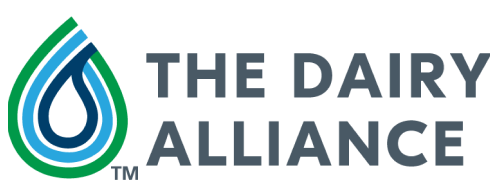Useful Dairy Facts I Learned As a Nutrition Professional
As a current graduate student studying nutrition, I have learned many important dairy facts. I have learned a lot about food and also consumers’ reasons for avoiding certain food groups. Whether consumers avoid foods for ethical, digestive, or palatability reasons, there’s no doubt that dairy is an affordable, accessible, and nutritious part of a healthy diet. After a week of interning with The Dairy Alliance, these are three main things I learned about dairy that will be useful in my future career as a nutrition professional and as a dairy consumer myself!
3 Useful Dairy Facts
All Dairy is Free of Antibiotics
Have you ever been shopping and discovered that one dairy milk product was labeled as “antibiotic-free” while another was not? Regardless of the dairy milk product you purchase, neither option contains antibiotics. The Food and Drug Administration regulates all dairy products in the U.S. and milk is tested at numerous checkpoints to ensure all milk reaching consumers is free of antibiotics.
Dairy Products Vary in Lactose
Lactose intolerance, the inability to digest lactose that leads to uncomfortable gastrointestinal symptoms, affects 36% of individuals in the United States. Each individual’s tolerance to lactose varies as well as their symptoms. While most lactose-intolerant individuals opt to exclude dairy from their diet completely, dairy education can help consumers enjoy dairy and its numerous benefits again with confidence! Lactose-free and low-lactose products like natural cheeses such as cheddar and mozzarella (1.5-ounce serving = less than 1 gram of lactose) are easy to find.
The degree of lactose intolerance patients experience should be treated on an individual basis. Here are some tips I learned that I can share with my patients who may be experiencing varying degrees of lactose intolerance.
Try it - Choose lactose-free or low-lactose dairy milk products.
Stir it - Add dairy milk to other foods such as cereals or smoothies to help slow lactose digestion.
Slice it - Choose natural cheeses like cheddar, Swiss, and mozzarella that are naturally low in lactose.
Shred it - Top or add natural cheese to a variety of dishes.
Spoon it - Try probiotic dairy foods like yogurt or kefir, which have active, live cultures that help digest lactose.
Sip it - Slowly introduce dairy into your diet to test and build up your tolerance to dairy products.
Dairy Alternatives Are--Well--Alternatives
Milk alternatives are not considered equivalent replacements for dairy milk. Milk alternatives typically contain more ingredients, have an increased cost, and have lower nutrients, including protein, than dairy milk. Dairy milk is a leading food source as it contains 13 essential nutrients, including calcium, potassium, and vitamin D. Dairy milk is also an economical source of nutrition as each 8-ounce serving costs just 20 cents. Dairy products are a nutritious part of a healthy diet that can also reduce the risk of chronic diseases.
Learn More Dairy Facts from The Dairy Alliance
The more you know about dairy, the more you can enjoy excellent dairy products! Check out The Dairy Alliance blog. What dairy product are you grabbing next?
Nicole Joyner is a current graduate student in the Master of Nutrition program at Meredith College. She was born and raised in Eastern North Carolina on her family’s farm, which instilled in her a curiosity, passion, and love for food. She is currently working toward becoming a Registered Dietitian to help others find that same love and understanding of food.






